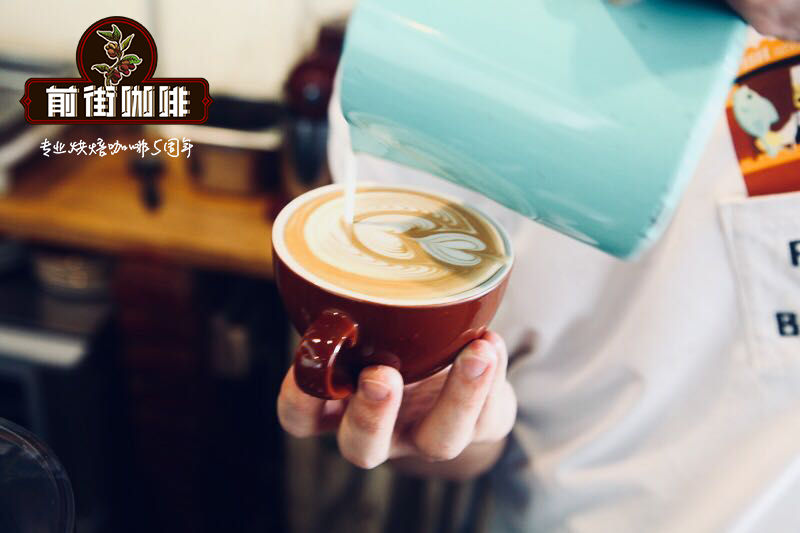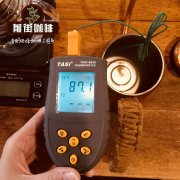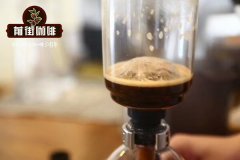Burundi COE Champion bidding batch Kibingo processing Plant Coffee Bean Story _ Burundian Coffee recommendation

Professional coffee knowledge exchange more coffee bean information please follow the coffee workshop (Wechat official account cafe_style)
Burundi is a land with a long coffee tradition. Its high altitude, thousands of hills, volcanic soil and abundant rainfall provide ideal conditions for the production of special and exotic coffee. In Burundi, there are no large plantations. Coffee is actually grown on small family farms, traditionally bringing cherries to the nearest coffee washing station.
Burundi divides its coffee system into so-called Sogestals (Societ é sdeGestion desStations de Lavage-translation: the management company of the washing station). They are the organization behind most washing stations in Burundi. Sogestals supports farmers and washing stations through financing, transportation, international commercialization of fertilizers and coffee.
The coffee comes from the Kayanza region, located in the north of the country, near the border with Rwanda. Kayanza is mainly known for its water source of the Nile. A unique type of water used to treat coffee fruits from all nearby wet mills.
Kibingo's washing treatment plant was built in the mid-1980s. It collects cherries from miniature plantations located around the station on high-altitude hills near the ridge of the Congo-Nile.
In the cup, this special Burundian coffee has floral, citrus and caramel flavors. It balances the fruity sweetness of the toast aroma, which won it the Presidential Cup Excellence Award in 2013.
Arrived in early June, Grainpro's new crop. This is the first time we serve coffee at the Kibingo washing plant in Kayanza province, near the Rwandan border. The washing plant was built in 1986 and currently collects coffee fruits from more than 3500 local farmers. It is located at an altitude of 1893 meters or 6200 feet, near the Congo-Nile crest. The washing plant is famous for its wooden bridges built over the river. The name "Kibingo" comes from the Kirundy language urubingo, which means "Reed". Reeds are planted along the river to hold water and prevent surrounding soil erosion.
Burundian coffee is mainly grown on small farms that do not operate cherries and takes it to local washing stations. The best operating stations pay more for high-quality cherries, which means they are fully mature, well developed and quickly brought to immediate processing from the farm. This may be most obvious at the Kibingo washing plant, whose coffee entered the top 10 in the Excellence Cup competition in 2017, 2015 and 2013, and won first place in 2017. Although this product comes from other farmers and lots in the washing plant, we feel that there is still evidence of this concern and concern for the quality of coffee.
In Burundi, most coffee is grown by farmers. In fact, in this small country with a population of only 9 million, about 800000 families are involved in the industry; it accounts for 80 per cent of Burundi's export earnings. Almost all coffee grown is Arabica coffee and bourbon. Farmers grow crops for their own food supplies, but also grow some cash crops (such as coffee). Most self-employed farms have 50 to 250 trees and only a few bags of coffee. Once the coffee is picked, it must be rushed to the washing plant.
Burundi has a unique coffee processing tradition of crushing and "dry fermentation" the coffee fruit for up to 12 hours, then washing it fully with clean mountian water for between 12 and 24 hours. Finally, soak the beans for 12 to 18 hours, then dry them with parchment on a raised bed. In addition to the high altitude where coffee is grown, this process can also produce clean, high-quality coffee cups.
Province: Kayanza
Commune: Kayanza
Altitude: 1893 m / 6200 ft
Variety of coffee: bourbon
Processing: washing
Cup features: Jasmine and chocolate taste with exquisite body and acidity.
Baking instructions: strong, dense bourbon can be baked to light to dark. Our personal preference is at the beginning of the second crack; there will be some high notes, and chocolate notes will be well defined. A slightly darker barbecue like the Viennese barbecue makes an interesting single espresso.
Burundian Coffee fact:
Population: 8.98 million
Coffee production: 515000 bags (60 kg) or 68 million pounds. Arabica coffee accounts for 96% of production.
Country package capacity: 132 lbs-60 kg
Domestic consumption: very little.
Coffee export: 510000 bags (60 kg)
Area of cultivated land: 60, 000 hectares (about 150000 acres)
Harvest: February to June
Introduction of Arabica: the Belgians introduced Arabica in the early 1930s.
Burundian coffee producing areas: Western and central regions.
Grade: according to the size and number of defects allowed, premium grade washed coffee is Ngoma Mild,AA and A. The average water content is 11.5%.
Farm: an activity dominated entirely by small farmers, with more than 800000 families directly involved in coffee cultivation. The farm is very small, with only 50 to 250 trees per farm. Coffee is grown between 1250 and 2000 meters above sea level.
Plant species: bourbon
END
Important Notice :
前街咖啡 FrontStreet Coffee has moved to new addredd:
FrontStreet Coffee Address: 315,Donghua East Road,GuangZhou
Tel:020 38364473
- Prev

Flavor description of coffee bourbon washed beans in Cabuye, Burundi. Introduction to Burundian coffee producing areas
Professional coffee knowledge exchange more coffee bean information please follow the coffee workshop (Wechat official account cafe_style) [flavor description] oranges, limes, grapes, plums, rich juice when sipping, sweet and sour, taste round and balanced. Burundi is a small landlocked country located in East Africa, with Luwang to the north, east and west respectively.
- Next

Starbucks wins Burundian Jahah BURUNDI GAHAHE Coffee Bean Story
Professional coffee knowledge exchange more coffee bean information please follow the coffee workshop (Wechat official account cafe_style) Starbucks selection is Starbucks enthusiastic masterpiece will be rare Starbucks selection coffee beans presented to every coffee lover each store uniquely designed coffee space is to let customers indulge in this season, selection and usher in a new experience
Related
- Detailed explanation of Jadeite planting Land in Panamanian Jadeite Manor introduction to the grading system of Jadeite competitive bidding, Red bid, Green bid and Rose Summer
- Story of Coffee planting in Brenka region of Costa Rica Stonehenge Manor anaerobic heavy honey treatment of flavor mouth
- What's on the barrel of Blue Mountain Coffee beans?
- Can American coffee also pull flowers? How to use hot American style to pull out a good-looking pattern?
- Can you make a cold extract with coffee beans? What is the right proportion for cold-extracted coffee formula?
- Indonesian PWN Gold Mandrine Coffee Origin Features Flavor How to Chong? Mandolin coffee is American.
- A brief introduction to the flavor characteristics of Brazilian yellow bourbon coffee beans
- What is the effect of different water quality on the flavor of cold-extracted coffee? What kind of water is best for brewing coffee?
- Why do you think of Rose Summer whenever you mention Panamanian coffee?
- Introduction to the characteristics of authentic blue mountain coffee bean producing areas? What is the CIB Coffee Authority in Jamaica?

